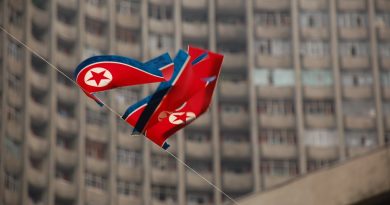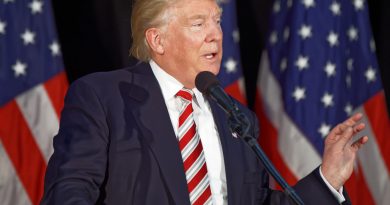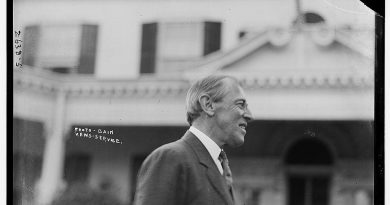Eight Years of Barack Obama in the White House: A Timeline
The Obama era has come to an end. After more than 2,900 days, the first African American and 44th President of the United States of America and his family will leave the White House on January 20, 2017, being succeeded by businessman Donald Trump.
During his presidency, Barack Obama was always true to himself, just as during the electoral campaign: as David Von Drehle noted, “Obama was elected purely for himself—his message, his persona and what he symbolized. In 48 brief months, he rose from the obscurity of a state legislature to become the first Democrat in more than three decades to win more than half of the popular vote. Messenger and message were inseparable; he offered himself as Exhibit A in the case for hope and change. Obama was a mirror in which millions of people saw their cherished ideals reflected: tolerance, cooperation, equality, justice”. Let’s take a look at some of the defining moments of Obama’s eight years in the highest office in the United States.
Timeline
January 2009: Barack Obama takes over the White House as the new POTUS on January 20, 2009. Only nine days later, he promulgates the Lilly Ledbetter Fair Pay Act which “helps ensure that workers discriminated on the basis of gender have a fair chance to sue their employers”.
February 2009: With the American Recovery and Reinvestment Act, the Obama administration creates a $800 billion stimulus bill to improve the economy, referring that “today [February 17, 2009] does not mark the end of our economic problems, (…) but it does mark the beginning of the end”.
March 2009: The White House Council on Women and Girls was created “to ensure that each of the agencies in which they’re charged takes into account the needs of women and girls in the policies they draft, the programs they create, the legislation they support and that the true purpose of our government is to ensure that in America, all things are still possible for all people”. Gender equality becomes one of the pillars of the Obama administration, under the command of Vice-President Joe Biden.
October 2009: Obama wins the Nobel Peace Prize “for his extraordinary efforts to strengthen international diplomacy and cooperation between peoples. The Committee has attached special importance to Obama’s vision of and work for a world without nuclear weapons”.
February 2010: It was when Obama met with the Dalai Lama that the US-China relationship most shook during his mandate. In 2012, when the US launched a new national defense strategy, China claimed “that the United States will flow with the tide of the era, and deal with China and the Chinese military in an objective and rational way, will be careful in its words and actions, and do more that is beneficial to the development of relations between the two countries and their militaries”.
March 2010: Obama launches the Patient Protection and Affordable Care Act, also known as Obamacare, which states “the core principle that everybody should have some basic security when it comes to their health care”.
April 2010: The USA-Russia has been quite unpredictable since the end of Cold War. Presidents Barack Obama and Dmitry Medvedev signed in Prague the New START – Strategic Arms Reduction Treaty -, with the aim of beginning a new era and a prosperous partnership.
July 2010: The Dodd–Frank Wall Street Reform and Consumer Protection Act was a response to the 2008 subprime mortgage crisis. Obama said that “these protections will be enforced by a new consumer watchdog with just one job: looking out for people”.
December 2010: The Tax Relief, Unemployment Insurance Reauthorization, and Job Creation Act “not only secures vital tax relief and investments in our workers that will create jobs and accelerate economic growth, it contains specific policies that provide targeted support for working families, particularly women and mothers”. In this same month, Barack Obama ended the ‘Don’t Ask, Don’t Tell’ policy with the Don’t Ask, Don’t Tell Repeal Act, allowing all men and women, despite their sexual orientation, to serve openly in the United Sates Armed Forces.
March 2011: The US-led military intervention of NATO in Libya, aimed at implementing the United Nations Security Council Resolution 1973, resulted on Muammar Gaddafi’s death and a transnational council to rule the country.
May 2011: “Justice has been done”, said Obama. Almost 10 years after the fateful 9/11, Osama bin Laden is killed in Pakistan by a SEAL team on May 2nd.
December 2011: During his campaign, Obama promised to withdraw all American soldiers from Iraq. By the end of 2011, there were only 150 soldiers to help the USA embassy on training and cooperation missions. However, the situation was reversed with the increase of the Islamic State activity and, in April 2016, the USA already had almost 5,000 militaries in Iraqi territory.
May 2012: This month marked the beginning of troop reduction in Afghanistan. Since 2009, Obama had always increased its number and, in 2012, there were more than 90,000 militaries in Afghan soil. Despite that, the withdraw has been quite slow. President Barack Obama plans “to leave 8,400 American troops in Afghanistan until the end of his term”.
December 2012: Under American law, citizens can have weapons for their own protection. Obama tried to reverse this law during his two terms, but not even the Sandy Hook Elementary School shooting, in which 20 children, between five and ten years old, and six adults were killed by a 20-year-old man, could do that (see Obama’s touching speech here).
January 2014: Concerning the Gender Equality Agenda, Barack Obama formed the White House Task Force to Protect Students from Sexual Assault, directed by Joe Biden and the White House Council on Women and Girls.
February 2014: After the Ukrainian Euromaidan Revolution, Russia took control of the Crimea territory. Obama mentioned that “the future of Ukraine must be decided by the people of Ukraine”, explaining that the US would help the Ukrainian people and sanction Moscow, but they would not go for a military intervention.
September 2014: Although the Syrian civil war began in 2011, US military intervention in Syria only occurred in 2014 when the threat of the Islamic State of Iraq and the Levant (ISIL) became real, after several journalists were killed at the hands of their supporters. Obama affirmed that “ISIL is not ‘Islamic’”, because “no religion condones the killing of innocents” remembering that “the vast majority of ISIL’s victims have been Muslim” and declaring that “ISIL is a terrorist organization, pure and simple”.
June 2015: “They ask for equal dignity in the eyes of the law. The Constitution grants them that right”. This was the final statement of the Supreme Court Justice, Anthony Kennedy, when ruled in favor of same-sex marriage in the United States.
July 2015: After two years of negotiations, Iran finally adopts the Joint Comprehensive Plan of Action, an international nuclear program which will allow lifting the sanctions imposed on Tehran in return for the assurance that Iran is going to thwart its nuclear aspirations. This deal included the five permanent members of the UN Security Council and the European Union. Also in July, the American embassy in Cuba was reopened, after 54 years of severed relations. In March 2016, Barack Obama landed in Cuba for a meeting with Cuban President Raúl Castro.
December 2015: For the first time, the United States took action on an environmental global treaty, the Paris Agreement. President Obama stated that it was “a historic day in the fight to protect our planet for future generations. This gives us the best possible shot to save the one planet we got. With optimism and faith and hope, we are proving it is possible”.
The most criticised policy of Obama’s cabinet remains the failing to close the Guantánamo military prison. President-elect Donald Trump already said he intends to keep the prison open and including American ISIS supporters in there, while bringing back waterboarding and other kind of torture. Despite all his letdowns and the thought that he created the Trump phenomenon, Obama might have been one of the greatest Presidents in the United States. As we wave him ‘goodbye’, we can just hope for that his legacy will prevail during the controversial Trump administration.
Yes, he did.
Barack Obama with the Dalai Lama. Photo by the White House / public domain
![]() This work is licensed under a Creative Commons Attribution-NonCommercial-ShareAlike 4.0 International License.
This work is licensed under a Creative Commons Attribution-NonCommercial-ShareAlike 4.0 International License.




